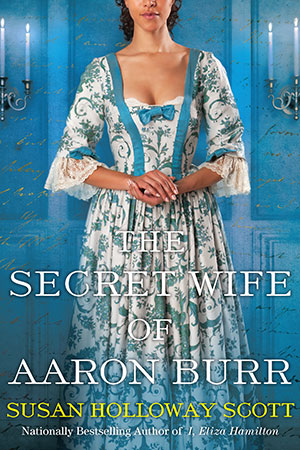Susan reporting,
Before there was Evite, before there were texts, before there was even a telephone, hostesses and hosts invited their guests to dine with a hand-written note. If that hostess or host were sufficiently important, influential, or wealthy (or all of those), a specially engraved invitation like the one shown here might be sent. As elegantly worded and beautifully scribed as this invitation appears, the blanks left for the guest's name and other details made them a boon for those with a busy social life.
The card, left, was sent by President George Washington and his wife Martha Washington to invite Alexander and Elizabeth Hamilton to dine at the presidential mansion in January, 1790. Watch out for all the old-fashioned long-form S's that look like F's in the printed part of the invitation. In contrast, the handwritten S at the end of Hamilton's name is quite ordinary. I don't know why Eliza's name wasn't written in as well; perhaps the 18thc version of the modern "plus one" was understood.
At this time, Washington was the country's first president, and still in the first year of his first term; he had taken the oath of office in April, 1789 in New York City, which was then serving as the capital. In early 1790, Washington, his cabinet, and Congress were still creating what would become the federal government, but creating a presidential "style" was important, too. President and Mrs. Washington had to balance their social life between representing the new country in a properly dignified manner, and appearing too elitist or aristocratic, or even monarchical. New rituals like formal dinners and levees were developed, and invitations like this one would have been prized.
The young - they were both in their early thirties - Hamiltons must have been equally prized as guests. As the first Secretary of the Treasury, Alexander Hamilton was a member of Washington's cabinet, and at this time he was considered among the most brilliant and powerful men in the country. In the same month in which this invitation was sent, Hamilton had proposed the first of his economic plans to Congress, his Report on Public Credit. Powerful or not, Hamilton or his wife must have realized the significance of this presidential invitation, and preserved it for posterity.
On loan from the New-York Historical Society, the invitation is currently on display at the Museum of the American Revolution in Philadelphia as part of their "Year of Hamilton." In addition to a special exhibition and interactive playscape called Hamilton Was Here: Rising Up in Philadelphia (opening 10/26), the museum is also hosting special programs and displaying many Hamilton-related pieces - including important letters and documents, portraits, and other artifacts - within their permanent collection over the next year. These will be marked with a special "Hamilton Was Here" label to make Hamilton-hunting easier (and for those of you Hamilfans unable to visit Philadelphia, I'll be sharing more, too.)
Above: Invitation, January, 1790, New-York Historical Society.
Photograph ©2018 Susan Holloway Scott.
Read more about Eliza and Alexander Hamilton in my latest historical novel I, Eliza Hamilton, now available everywhere.
Laws Concerning Women in 1th-Century Georgia
10 months ago











































 One of us --
One of us -- 


